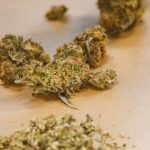
Prague, the capital city of the Czech Republic, is known for its vibrant culture, rich history, and stunning architecture. However, in recent years, the city has also gained a reputation for being a hub for the distribution and consumption of Brazilian cocaine.
What is Brazilian Cocaine?
Brazilian cocaine, also known as “oxi,” is a type of cocaine that originates from Brazil. It is known for its high purity and potency, making it a popular choice among drug users. The cocaine is typically produced in the form of a white powder or small rocks, and is often cut with other substances to increase its volume and profitability.
The Rise of Brazilian Cocaine in Prague
In recent years, Prague has seen a significant increase in the availability and popularity of Brazilian cocaine. The city’s strategic location, with its proximity to Western Europe and its well-developed transportation infrastructure, makes it an ideal hub for the distribution of illicit substances. Additionally, the city’s vibrant nightlife and tourist industry have created a demand for high-quality cocaine, which Brazilian cocaine has been able to fulfill.
Consequences of the Brazilian Cocaine Trade
The rise of Brazilian cocaine in Prague has had significant consequences for the city and its residents. The increased availability of high-purity cocaine has led to a rise in addiction and overdose rates, with many users experiencing serious health problems as a result of their addiction. Furthermore, the trade has also been linked to organized crime and violence, with rival gangs competing for control of the lucrative market.
Efforts to Combat the Brazilian Cocaine Trade
In response to the growing problem, the Czech authorities have launched a series of efforts to combat the Brazilian cocaine trade. These efforts include increased border controls, raids on suspected drug dens, and cooperation with international law enforcement agencies to disrupt the supply chain. Additionally, the city has also launched a number of initiatives aimed at reducing demand, including education and awareness campaigns, as well as treatment and support programs for addicts.
- Increased border controls to prevent the smuggling of cocaine into the country
- Raids on suspected drug dens to disrupt the distribution network
- Cooperation with international law enforcement agencies to disrupt the supply chain
- Education and awareness campaigns to reduce demand
- Treatment and support programs for addicts
While the problem of Brazilian cocaine in Prague is complex and multifaceted, it is clear that a comprehensive approach is needed to address the issue. By combining efforts to disrupt the supply chain with initiatives aimed at reducing demand, the city can hope to reduce the harm caused by this dangerous and addictive substance.
The Impact on Local Communities
The rise of Brazilian cocaine in Prague has had a significant impact on local communities, with many residents expressing concerns about the increased presence of drug dealers and users in their neighborhoods. The city’s historic center, once a popular tourist destination, has seen a rise in crime and anti-social behavior, with many businesses and residents feeling intimidated by the presence of organized crime groups.
Affects on Tourism
The Brazilian cocaine trade has also had a negative impact on Prague’s tourism industry, with many visitors expressing concerns about the safety and security of the city. The city’s reputation as a popular destination for stag parties and other groups has been tarnished by the presence of drug dealers and users, with many tourists opting to visit other destinations in Europe instead.
Law Enforcement Efforts
Despite the challenges, law enforcement agencies in Prague are working hard to combat the Brazilian cocaine trade. The city’s police force has launched a series of operations aimed at disrupting the supply chain and arresting key players in the trade. These efforts have been supported by international cooperation, with agencies from around the world working together to share intelligence and best practices.
Some of the key strategies being used by law enforcement include:
- Intelligence-led policing: using data and intelligence to identify and target key players in the trade
- Undercover operations: using undercover officers to gather evidence and make arrests
- Community policing: working with local communities to build trust and gather intelligence
- International cooperation: working with agencies from around the world to share intelligence and best practices
A Way Forward
While the problem of Brazilian cocaine in Prague is complex and challenging, there are signs that the city is starting to turn a corner. With a combination of effective law enforcement, community engagement, and international cooperation, it is possible to reduce the harm caused by this dangerous and addictive substance. By working together, the city can hope to rebuild its reputation as a safe and welcoming destination for tourists and residents alike.
As the city continues to evolve and grow, it is likely that the Brazilian cocaine trade will remain a challenge. However, with the right strategies and approaches, it is possible to minimize its impact and create a safer, more prosperous community for all.
7 thoughts on “Brazilian Cocaine: Prague’s Zesty Pick”
Leave a Reply Cancel reply
You must be logged in to post a comment.




It\
This article provides a comprehensive look at the issue of Brazilian cocaine in Prague. I appreciate the balanced approach taken by the author.
This article highlights the importance of international cooperation in addressing global issues like drug trafficking. Well done to all involved.
I recently visited Prague and was unaware of this issue. Thank you for shedding light on this problem and the efforts being made to combat it.
This is a very informative article about the rise of Brazilian cocaine in Prague. It\
I\
As someone who has struggled with addiction in the past, I can attest to the dangers of high-purity cocaine. Thank you for highlighting this issue and raising awareness.